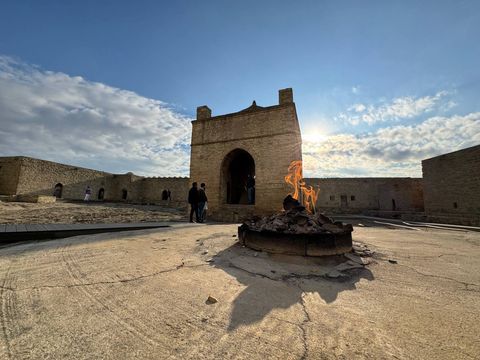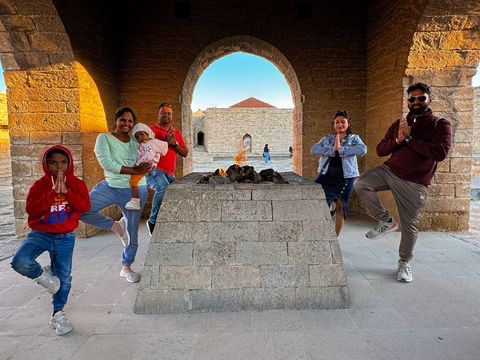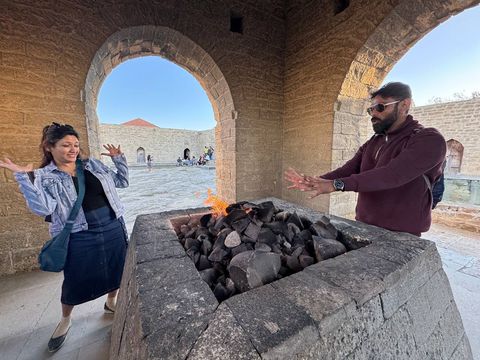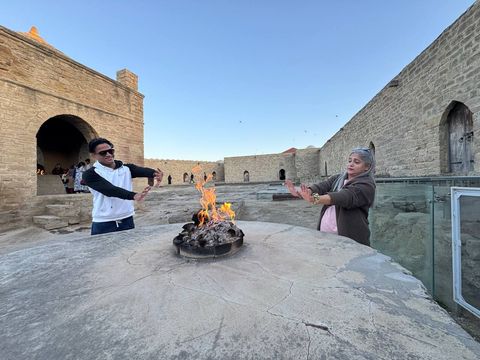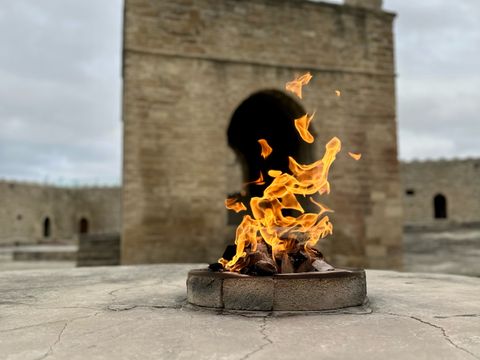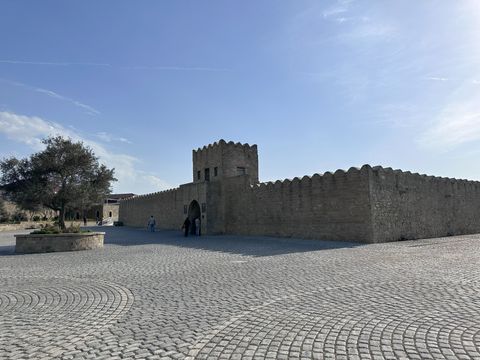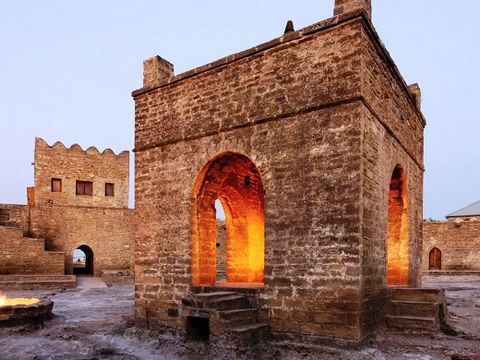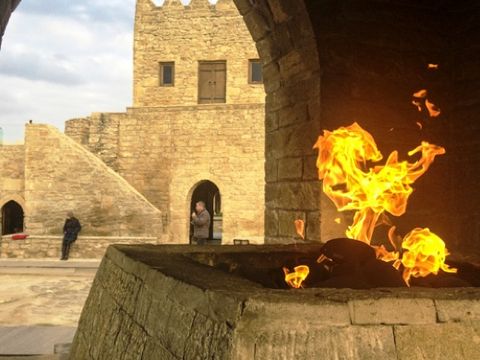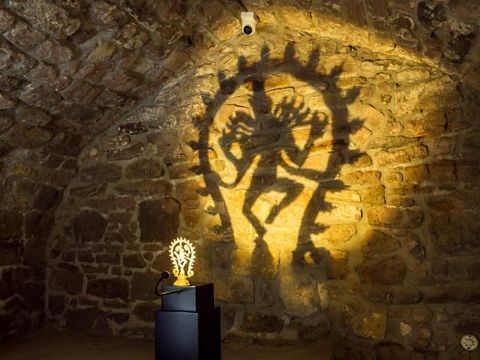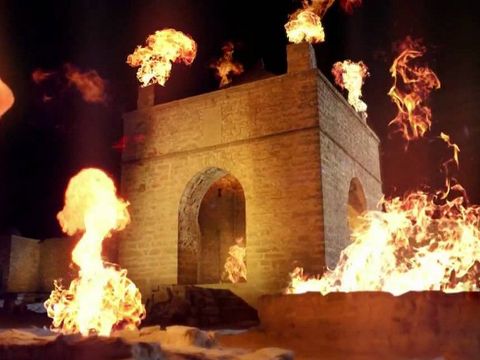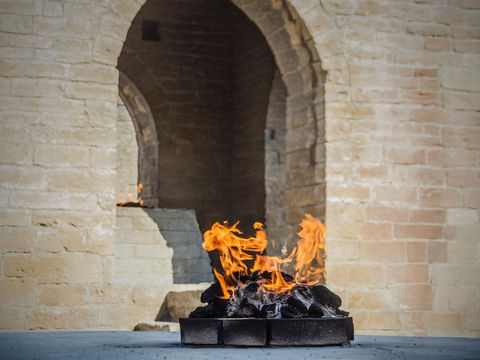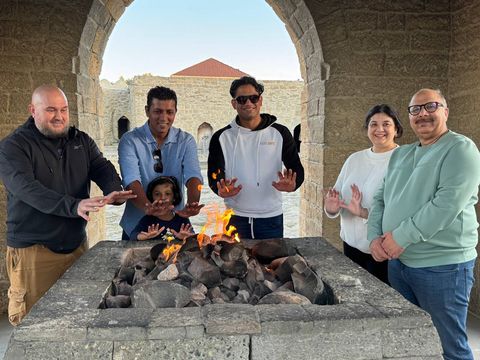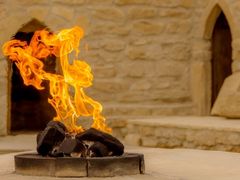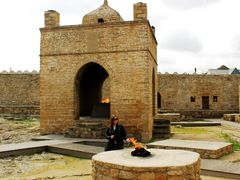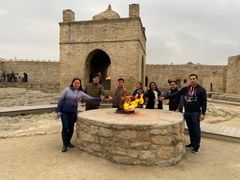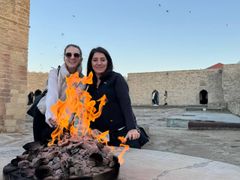Frequently Asked Questions about Ateshgah fire temple
What is the Ateshgah Fire Temple, and why is it significant?
The Ateshgah Fire Temple is a historic religious site located near Baku, Azerbaijan. Originally a Zoroastrian place of worship, it evolved into a pilgrimage destination for Hindus and Sikhs. The temple is renowned for its unique architecture and historical significance.
When was the Ateshgah Fire Temple constructed, and what is its history?
The Ateshgah Fire Temple dates back to the 17th century, built during the period when Azerbaijan was a part of the Safavid Empire. It served as a sacred site for Zoroastrians who came to worship the eternal flame.
Why is it called the "Fire Temple," and is the eternal flame still burning?
The temple earned its name because of the natural gas vents in the area that once fueled a perpetual flame. While the original natural flame is no longer present, a symbolic eternal flame is maintained using piped natural gas.
What cultural influences are reflected in the architecture of the Ateshgah Fire Temple?
The Ateshgah Fire Temple features a distinctive pentagonal shape and incorporates architectural elements from Azerbaijani, Indian, and Persian traditions, showcasing the cultural diversity of the region.
Can visitors explore the interior of the Ateshgah Fire Temple?
Yes, visitors can explore the interior of the Ateshgah Fire Temple, which consists of small cells that were once used by pilgrims for meditation and rest. The cells now house exhibits and artifacts related to the temple's history.
Are guided tours available at the Ateshgah Fire Temple?
Yes, guided tours are often available, providing visitors with insights into the historical, cultural, and religious aspects of the Ateshgah Fire Temple. Knowledgeable guides share stories about its significance and the practices of pilgrims.
What is the entrance fee to visit the Ateshgah Fire Temple?
Ateshgah Fire Temple & Yanardag Burning Mountain: 15 AZN
Is the Ateshgah Fire Temple accessible for individuals with disabilities?
The Ateshgah Fire Temple may have some limitations in terms of accessibility for individuals with disabilities. It's recommended to inquire about specific arrangements or facilities in advance.
What are the best times to visit the Ateshgah Fire Temple?
The Ateshgah Fire Temple can be visited throughout the year, but mornings or evenings are recommended for a more serene experience. Consider checking the local weather and any scheduled events.
Are there any nearby attractions or points of interest to explore after visiting the Ateshgah Fire Temple?
Yes, visitors can explore nearby attractions such as the Yanar Dag (Burning Mountain), Gobustan National Park, and other historical landmarks, enriching their overall experience of Azerbaijani culture and history.
